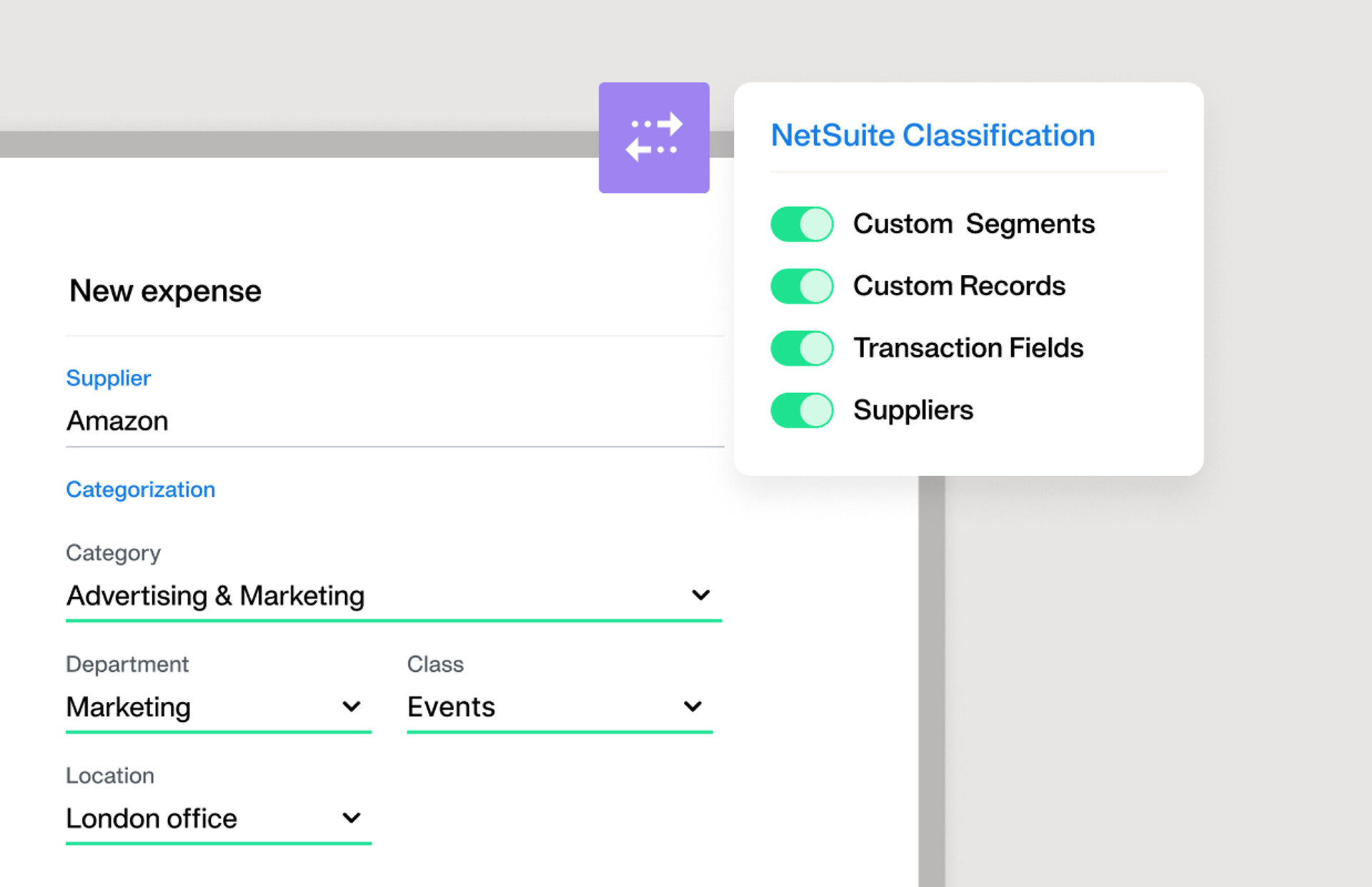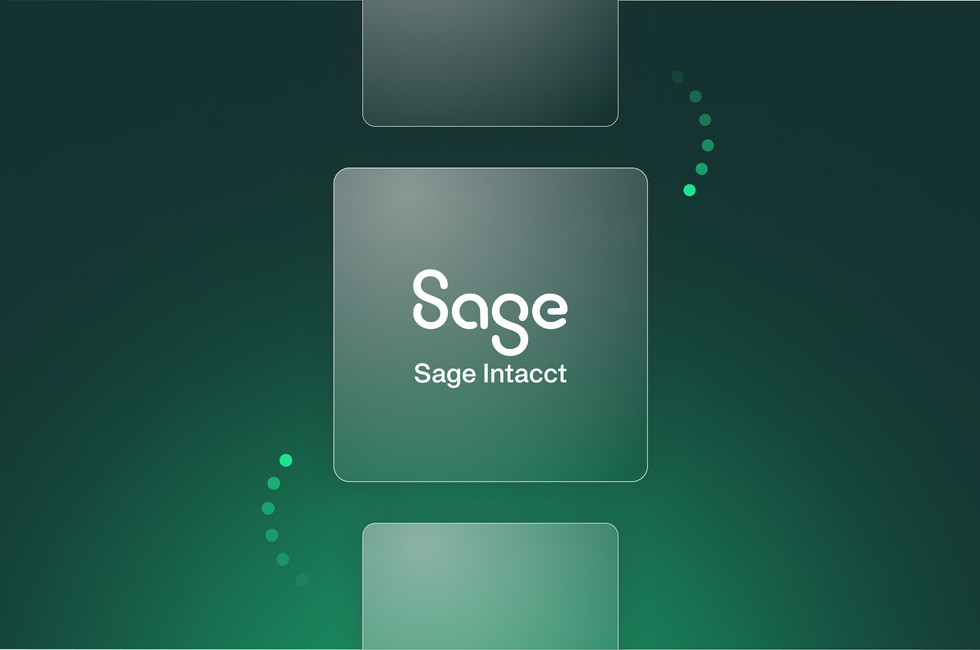
Top fintech trends driving the finance industry in 2024

.png)
.png)
Financial services are undergoing rapid digital transformation, with new technologies disrupting traditional banking and financial models. As we enter 2024, the pace of innovation shows no signs of slowing down. Here are 12 key fintech trends that will shape the future of financial services and could affect how you operate your business.
By submitting this form, you agree to receive emails about our products and services per our Privacy Policy.
The financial landscape is forever evolving, which is exciting for those of us in the fintech sector but sometimes hard for other stakeholders to keep pace with. With so many notable changes on the horizon, let’s take a look at the top 13 fintech trends we believe will continue to grow in 2024.
What are B2B fintech trends?
B2B fintech trends are emerging in business finance. Tech is rapidly changing, and the global financial market looks vastly different from the last few years.
According to a QED report, fintech will reach a staggering $1.2 trillion of $22 trillion Global Financial Services Revenues by 2030.
Why are these trends important for CEOs?
By following relevant B2B fintech trends, organizations can improve their financial performance and process management. Current fintech trends can transform how your organization operates, whether it’s vastly improving expense processes with the help of AI data extraction or using machine learning techniques to spot financial spending patterns better and optimize budgets.
Understanding how upcoming fintech trends could affect how you do business and manage your finances effectively is essential. So, without further ado, let’s dive into the top trends.

Twelve key fintech trends to watch out for in 2024
1. Open banking
Open banking facilitates the sharing of financial information between third-party providers and banks through APIs (application programming interfaces). For example, an API can allow users to access multiple bank accounts from within one app. This kind of connection increases customer transparency and empowers those managing organization finances to control them without wasting time on manual payment processes.
Customer demand drives innovation in open banking, and customers demand faster, more convenient, and more secure payment processes. So, in 2024, we’ll likely see the rise of unparalleled payment experiences utilizing open banking but with increased regulation to better protect consumers and data and ensure fair competition.
2. Artificial intelligence and machine learning in fintech
Artificial intelligence has come a long way in a relatively short time, and it’s exciting to see the possibilities this tech presents in the financial space. AI and machine learning are already transforming business finances, coming in particularly useful when extracting financial data from expense receipts, making the expense management process more efficient, reducing errors, and streamlining the reimbursement process.
Machine learning can already analyze vast amounts of data, spotting spending patterns and trends and helping finance administrators make informed decisions based on accurate data. In 2024, AI and machine learning are expected to assist the finance industry further with detecting risk and fraud.
3. Decentralized Finance (DeFi) and blockchain
Decentralized finance (DeFi) enables financial transaction management without external agents. Customers can access services, including lending and investing, by integrating cryptocurrency and blockchain technology without traditional intermediaries like banks or other financial institutions. DeFi has been pushing to enable a global P2P (peer-to-peer) financial network to decentralize global financial markets for the past 5+ years.
And it did not go unnoticed! Grand View Research valued decentralized finance at 13.61 billion USD in 2022 and expects it to grow exponentially over the next few years, with experts forecasting revenue growth of 231.19 billion USD by 2030.
4. Buy Now, Pay Later (BNPL) solutions
The BNPL market isn’t a new one. Companies like Clearpay and Klarna have been paving the way for the B2C market for years. But BNPL in the B2B space is witnessing substantial growth, too. Platforms will undoubtedly consider offering BNPL solutions as a competitive differentiator as we head into 2024. Such solutions provide convenience (and cash flow boost) that could be very attractive to organizations worldwide.
5. Biometric authentication in financial services
As fintech services increase in numbers, so too does the threat of cybercrime. Biometric authentication makes accessing apps, tools, and sensitive information much easier and more secure using vitals (such as fingerprints, facial recognition, etc.). Gone are the days when you had one password to enter (and hack) in favor of unique authentication.
Although biometric authentication adds another layer of security protection, we’ll likely see growth in fingerprint and facial recognition to verify user identity in 2024 (many fintech companies like us at Payhawk have already implemented these a while back).
6. Gamification and user-specific content in B2B fintech
User adoption with new tech is paramount. Without their adoption, any financial software would become stagnant and fail to gather the subscription cost needed to stay sustainable.
Gamification in fintech uses game-like elements to engage and motivate users, making financial tasks more interactive and enjoyable. It often involves generating user-specific content (such as scratch cards with offers, rewards programs for completing mini-games, etc.)
Gamification enhances user experience and improves engagement — it’s a growing trend for sure, not just in the finance industry but across the corporate and consumer-facing sectors, from project management tools like Asana to coffee brands like Starbucks and retail marketplaces like Alibaba.
7. Internet of Things (IoT) integration in finance
The Internet of Things (IoT) refers to a network of interconnected devices embedded with sensors, software, and other technologies that enable them to collect and exchange data. These devices range from everyday objects like household appliances, wearables, and vehicles to industrial machinery and infrastructure components.
In 2024, the IoT will further infiltrate the finance space with a potential surge in the adoption of wearables, including payment rings, bracelets, and watches.
Not quite the IoT, but if we’re talking about seamless integrations, we have to mention ours. Our first-rate ERP integrations and TravelPerk and 60Dias VAT integrations support smoother expense management, month-end close, spend analysis and real-time reconciliation.


8. Embedded finance
Embedded finance allows customers to access financial products without completing rigorous and lengthy applications or visiting third-party providers to complete purchases. An example would be applying directly for virtual Visa cards through a spend management platform, like ours, instead of going to the bank.
Instant access to finance is transformational for organizations struggling to manage cash flow and going through lengthy approval processes. In particular, with pre-qualified finance deals available to businesses, they have faster access to cash, enabling companies to invest and grow faster.
Embedded finance has a predicted market growth of $350 billion in 2024, so we can expect exciting developments in this space over the coming year.
9. Green fintech
Customers favor organizations that do their bit to help the environment. But even without a passion for reducing your carbon footprint, large organizations will soon be obligated to report on their carbon emissions. Hence, finding tech to make carbon reporting easier is necessary.
ESG reporting has never been easier with reporting tools built into spending management platforms like ours. It’s great to see the adoption of green fintech tools that enable organizations to make positive and impactful changes, a trend that continues to be important.
10. Neobanks: Continuing to disrupt traditional banking models
Neobanks, or ‘challenger banks’, are banks without a physical branch presence. Instead, they operate solely online. Their digital-first approach makes them more appealing to younger generations, particularly millennials, with 79.3% showing interest in digital banking.
These banks are meeting modern customer needs and driving much-needed innovation in the banking industry. Neobanks are making banking more accessible and cost-effective for every customer and will continue to do so into 2024.
11. Virtual bank cards and mobile payments: The rise of digital payment solutions
According to PYMNTS data, 39% of companies use virtual cards for B2B payments. This uptake shows the value of virtual cards when managing business finances. You can issue and delete virtual cards immediately, giving you greater control over spending and card security.
Virtual bank cards and mobile payment acceptance have also grown significantly over the last few years, with many more merchants now accepting them. These cards give cardholders greater flexibility, enabling them to purchase both online and in person using a digital wallet like Apple or Google Pay.
12. Regulation technology
Financial institutions need help managing regulatory compliance, reducing compliance costs, and improving risk management. According to REGnosys CEO Leo Labeis, spending on regtech is expected to make up to 50% of global compliance budgets by 2026. So, regtech is a trend that will only increase in the coming years.
Regulation technologies help automate compliance, reduce the likelihood of fines and penalties, and offer organizations a valuable solution for detecting potential threats to their financial security in real-time. When it comes to global payment providers — security standards have become much more efficient and prevalent in recent years, and regtech is making it much easier to adapt to this trend.
How does Payhawk keep up with the biggest fintech trends?
At Payhawk, we’re committed to delivering the best software solutions for all our customers. And that means staying at the forefront of emerging fintech trends and technologies. We consistently update and implement new features to transform how organizations manage their finances.
Here are just a few ways our software keeps up with the latest trends:
ESG reporting to optimize your carbon footprint
Reporting accurately on your business’s carbon emissions has never been more important than it is today. Consumers want to support companies making a difference, and with a crackdown on emission caps, it’s in every organization’s best interest to cut carbon emissions where they can. Our ESG reporting features help you accurately track carbon emissions throughout your supply chain, empowering you to act positively in the name of climate change.
AI camera for clever data extraction
Our AI camera uses OCR technology to automatically extract important information from your receipts and invoices. Creased receipts or poor lighting are no longer a problem with our camera technology: point, capture, and create a new receipt effortlessly, storing your receipts all through the Payhawk mobile app.
Issuance of virtual corporate cards
Virtual cards can be issued instantly, making it even easier to empower your employees wherever they are. More than 46 million merchants accept our virtual cards. Add them to your digital wallet and pay online or in person whenever the transaction allows.
Seamless IoT integrations for enhanced financial reporting
We know how much easier it is to integrate your tech stack fully. At Payhawk, we integrate with market-leading ERP and accounting systems to enable real-time reporting, reliable, accurate, and unified financial data, automatic transaction reconciliation, and more.
Open banking with Yapily
At Payhawk, we partnered with Yapily to enable customers to link and unlink one or more bank accounts from over 2,000 banks and institutions across multiple countries. Open banking presents a true opportunity for payment innovation, ultimately driving customer and organizational efficiency.
Extra security with biometric authentication
Feel even more secure using authentication via the app as it now requires a biometric (touch or face ID) or a static password (that the user has chosen).
The financial service landscape is changing faster than ever
How businesses manage company spending, process customer payments, and forecast growth is changing rapidly.
But before jumping on these trends, it’s essential to understand which trends can impact your business the most. Doing too many things at once can result in confusion and wasted funds. Take time to understand how your business will benefit from each trend, and plan a strategy accordingly.
Not all trends will be suitable or logical for your business to follow, but some will be the perfect match. For example, if you’re a multinational company with global teams, you’ll save time and money and improve visibility with virtual corporate cards and software that supports multi-currency management.
Learn more about how financial innovation advances businesses and consumers with our free ebook. Download now.
Trish Toovey works across the UK and US markets to craft content at Payhawk. Covering anything from ad copy to video scripting, Trish leans on a super varied background in copy and content creation for the finance, fashion, and travel industries.
Related Articles


Why you should integrate Dynamics 365 Business Central with Payhawk

